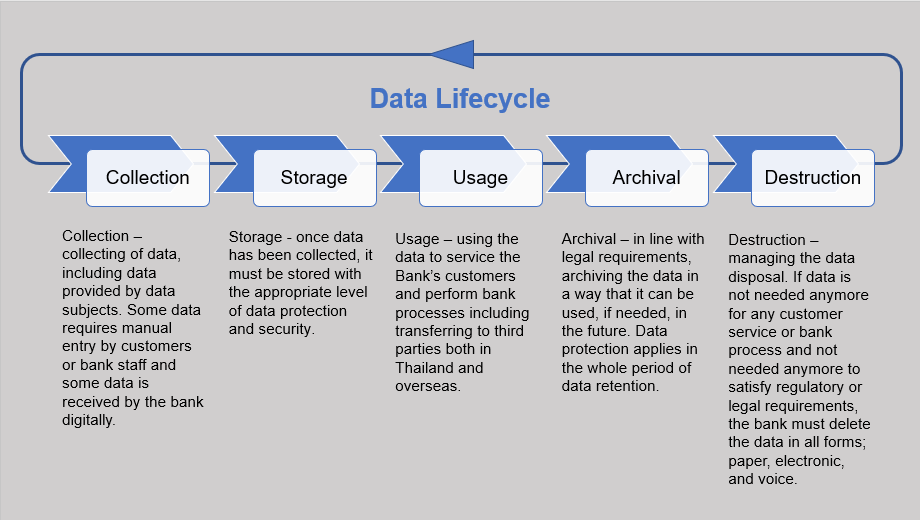Why Data Destruction is a Critical Part of Comprehensive Cyber Security
Why Data Destruction is a Critical Part of Comprehensive Cyber Security
Blog Article
The Importance of Effective Information Damage Practices in Shielding Sensitive Details and Ensuring Computer Safety And Security
In an age where information breaches are significantly typical, the importance of effective data devastation practices can not be overstated. Organizations face considerable threats when sensitive details is inadequately disposed of, possibly resulting in unauthorized gain access to and severe financial consequences. Implementing durable information devastation approaches not just reduces these threats but also lines up with lawful compliance requirements, ensuring that organizations support their track record and foster client depend on. The inquiry stays: what details approaches can be utilized to boost these practices, and how can organizations properly incorporate them into their overall cybersecurity framework?
Understanding Data Devastation
Comprehending data destruction is essential in today's electronic landscape, where delicate information can easily be jeopardized. Efficient data damage includes not just deleting data but making certain that data is irretrievable with detailed methods. This procedure is necessary for companies that take care of personal client information, copyright, or interior records, as any breach can cause severe monetary and reputational consequences.
Data devastation incorporates various techniques, including shredding physical media, degaussing magnetic storage tools, and using software-based solutions that overwrite information multiple times. Each approach offers a certain function and must line up with the sensitivity of the information being gotten rid of. Physical devastation is often liked for tough drives including extremely confidential data, while software program techniques might be enough for much less delicate information.
Moreover, sticking to market requirements and laws, such as the General Information Security Regulation (GDPR) or the Medical Insurance Portability and Liability Act (HIPAA), is critical for conformity and to minimize lawful threats. Organizations should develop a robust information devastation policy, train employees on best techniques, and regularly investigate their procedures to ensure that all delicate details is thrown away safely and effectively.
Threats of Inadequate Practices
Inadequate information damage practices reveal companies to significant threats that can have significant effects. When sensitive information is not correctly dealt with, it stays prone to unauthorized access, which can lead to data violations and identity burglary. Such occurrences not just compromise the security of individuals yet also taint the company's track record, causing a loss of customer trust fund and possible monetary effects.
Additionally, regulatory conformity is progressively rigid in lots of industries. Failure to stick to data devastation policies can lead to large penalties and lawsuits against companies. These penalties can strain funds and draw away attention from core company procedures.
Furthermore, the abuse of recurring data can bring about intellectual property burglary or business espionage, endangering affordable benefits (data destruction). The impact of inadequate data destruction extends past immediate financial losses; it can likewise cause lasting damages to brand integrity and market placement

Organizations must recognize that information safety is not exclusively regarding preventing violations; it also encompasses the responsible management of data throughout its lifecycle. Neglecting effective information devastation methods can have tragic effects, emphasizing the requirement for robust steps to reduce these dangers.
Ideal Practices for Information Damage
Executing efficient data devastation techniques is important for securing delicate details and keeping compliance with regulatory criteria. Organizations must embrace a multi-faceted approach to make certain that information is irretrievable, thus preventing unapproved gain access to and potential violations.
First, data should be classified based on level of sensitivity, permitting companies to apply proper devastation approaches tailored to the degree of threat. For electronic data, utilizing software-based data-wiping devices that adhere to sector standards can effectively overwrite existing data. Physical damage methods, such as shredding or degaussing, are important for tools that keep delicate information, ensuring total eradication.
Establishing a clear information retention plan is essential, outlining just how long different sorts of details ought to be preserved before devastation. Regular audits of data storage space systems are also needed to recognize unnecessary or out-of-date information needing removal.
Moreover, training staff members on the significance of information devastation and the particular procedures to adhere to fosters a society of protection within the company. Preserving documentation of data damage refines supplies liability and supports compliance with exterior regulations and internal policies. By adhering to these finest techniques, organizations can substantially minimize the threats connected with data direct exposure.
Legal and Compliance Factors To Consider

Failing to follow these guidelines can cause severe charges, consisting of substantial penalties and reputational damages. Organizations has to implement a durable information destruction policy that lines up with these lawful structures and gives clear guidelines on the appropriate methods of information disposal, whether physical shredding or electronic cleaning.
Furthermore, preserving paperwork of information devastation tasks is essential for demonstrating conformity during audits or examinations. By focusing on lawful and conformity factors to consider, companies can boost their information security posture and foster count on with customers and stakeholders, inevitably adding to a much more safe data administration environment.
Benefits of Effective Information Damage
Reliable information damage practices extend past plain conformity; they use substantial benefits to organizations that prioritize them. By making certain that delicate details is irretrievably damaged, companies mitigate the threat of information breaches and the potential financial repercussions connected with them. This proactive approach not only safeguards visit site against unauthorized gain access to but also enhances the total trustworthiness of the company in the eyes of stakeholders and customers.
Carrying out durable information devastation methods, such as physical damage of storage devices or advanced information wiping strategies, adds to the strengthening of a company's cybersecurity pose. data destruction. It minimizes the probability of copyright burglary and safeguards exclusive info, thereby keeping an one-upmanship out there

Conclusion
In conclusion, reliable information destruction practices are vital for protecting sensitive details and enhancing overall computer system security. Inevitably, a dedication to robust information destruction strategies cultivates a culture of responsibility, therefore reinforcing a company's cybersecurity posture and keeping customer count on.

Report this page